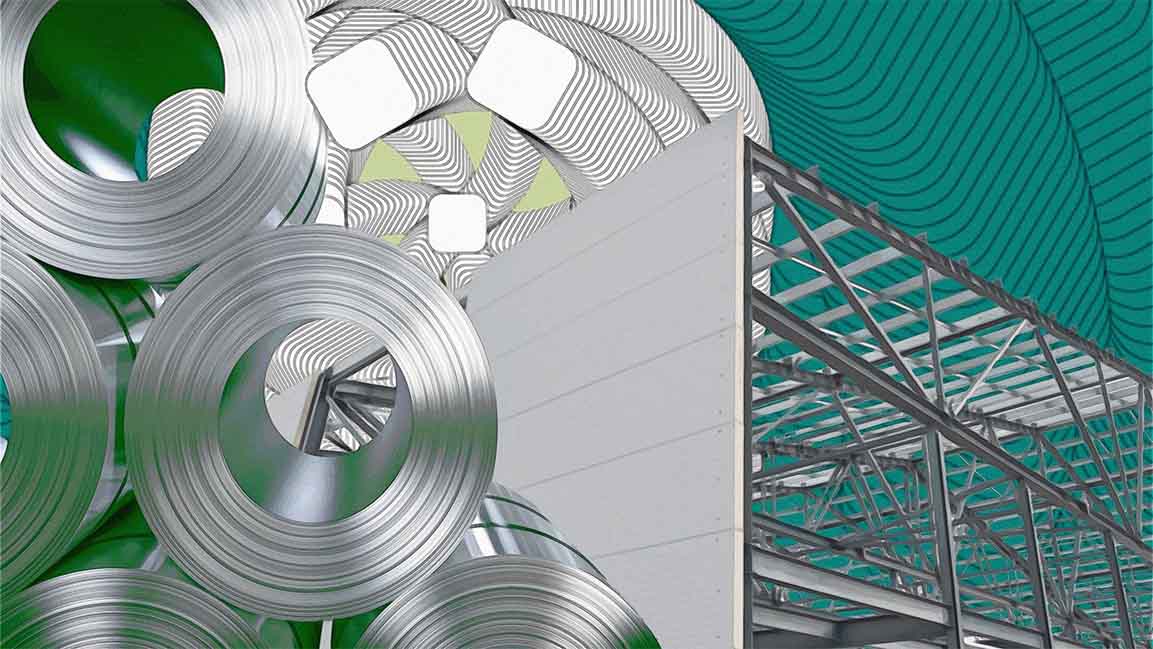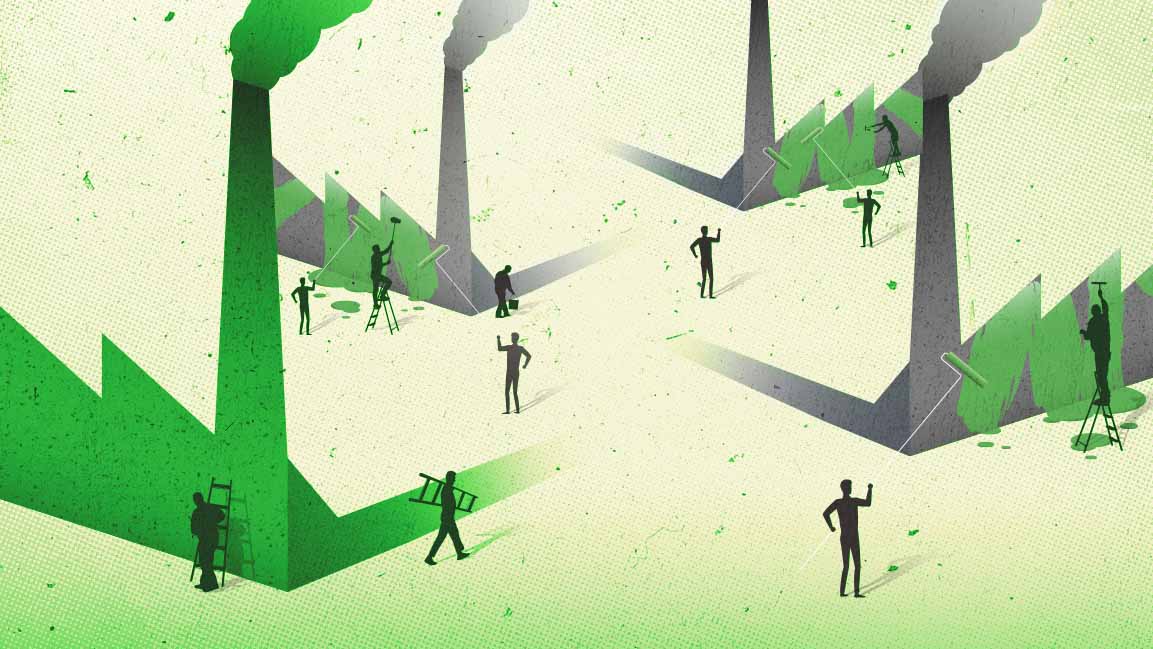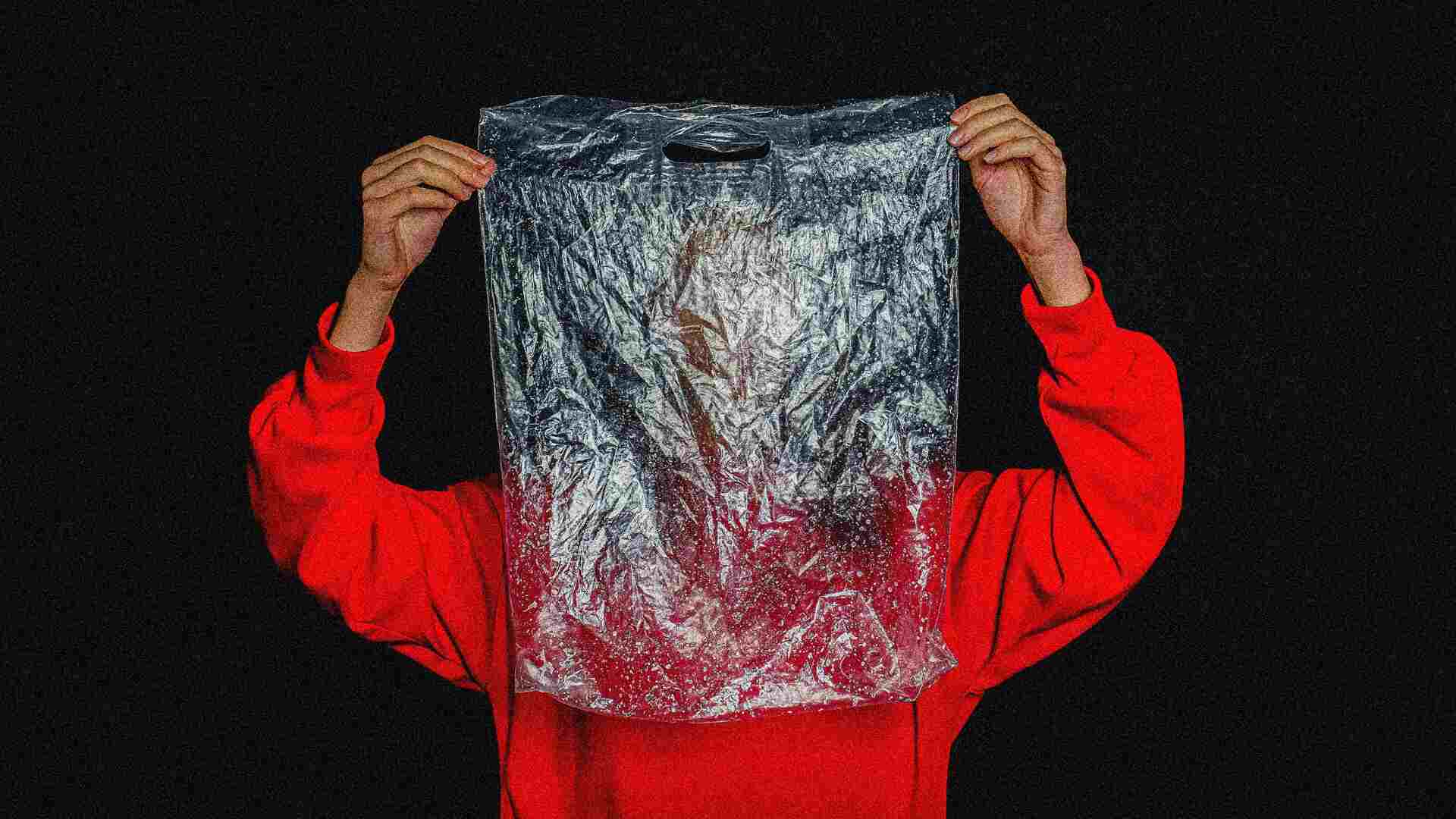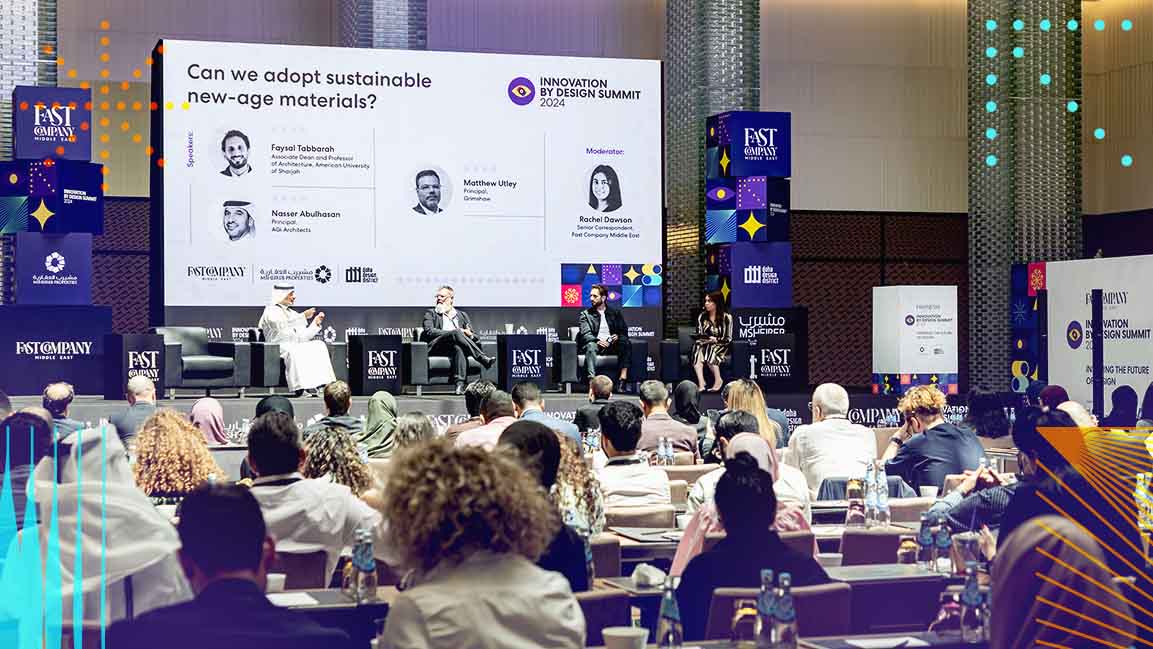- | 9:00 am
Can green steel shape the future of sustainable cities in the Middle East?
Sustainable steel will create resilient and eco-friendly urban environments.

In the Middle East, where ambitions shape the skylines of cities and infrastructures, green steel is carving a path to ecological responsibility.
Unlike conventional steel, which relies extensively on fossil fuels and energy-intensive procedures, leading to substantial carbon emissions, green steel, often called low-carbon or sustainable steel, is redefining the industry by reducing environmental impact and promoting energy efficiency, shifting towards sustainable manufacturing.
As industries in the Middle East strive to align with ecological responsibility, adopting green steel could be pivotal. But are industries adopting sustainable steel?
“The green steel adoption in the Middle East region has been gaining momentum, driven by various factors that reflect a growing interest in sustainable steel production methods,” says Bankim Parikh, Chief Financial Officer at Conares.
ADOPTION RATE IN THE MIDDLE EAST
The Middle East is increasingly aware of the environmental impact of traditional production methods, be it in steel or any other manufacturing sector. There is a growing commitment towards embracing sustainable practices, among which is integrating green steel production, says Eng. Saeed Khalfan Al Ghafri, CEO of Emirates Steel, an Emirates Steel Arkan company.
He believes that despite the challenges, the Middle East, and notably the UAE, is well-positioned to become a global leader in green steel. This is owing to the region’s resources, robust infrastructure, and essential government support required to transform green steel into a reality.
The Middle East is increasingly embracing green steel practices due to growing global awareness of environmental sustainability, says Deepak Bhandari, Chief Commercial Officer at Arabian Gulf Steel Industries.
Key trends include exploring hydrogen production from natural gas-rich nations for cleaner steelmaking, aligning with economic diversification goals, and reducing fossil fuel dependency.
Additionally, countries abundant in solar and wind resources are considering renewable energy to curtail carbon emissions in steel production. Circular economy principles like recycling, waste reduction, and product lifecycle management are gaining prominence among steel companies’ sustainability strategies.
The surge in environmental awareness within the region’s steel industry and stakeholders, implementation of supportive policies and initiatives by the government allowing the sector to transition towards more sustainable practices, research, and development to implement green steel technologies, rise in collaborations and partnerships with international organizations and the growing preference for environmentally friendly steel from consumers and businesses alike, are some of the notable trends and developments witnessed in the recent past.
CHALLENGES IN TRANSITIONING TO GREEN STEEL?
However, the Middle East faces numerous obstacles to embracing green steel. Meshary Al-Judaimi, Chairman at Foulath/Bahrain Steel, believes the high cost of producing hydrogen poses a challenge. Traditional blast furnace steel production, which constitutes a significant portion of global output, generates approximately 2.0 metric tons of CO2 per ton of steel.
In contrast, the steel production technique of DRI/EAF, commonly employed in the Middle East, emits less than 1.2 metric tons of CO2 per metric ton of steel. This makes the Middle East steel industry greener than China and India.
Substituting natural gas with hydrogen and adopting efficient renewable-powered furnaces, the DRI/EAF approach has the potential to usher in sustainable green steel manufacturing, with emissions plummeting to below 0.5 metric tons of CO2 per metric ton. For hydrogen-based steel production to be financially feasible, hydrogen prices must remain under $3.5/kg. Currently, alkaline electrolysis, a common method for hydrogen production, costs around $11/kg.
Judaimi emphasizes that the abundant access to affordable natural gas in the Middle East offers a competitive edge. However, this advantage could dissuade certain companies from investing in renewable energy and low-carbon technologies.
“The Middle East’s unique combination of almost unlimited renewable energy resources, an excellent strategic location, strong economic ambitions, and existing and future global partnerships also position it as a potential leader in promoting green steel on an international scale,” says Harssha Shetty, CEO at Jindal Shadeed Iron & Steel.
Also, transitioning to green steel production faces regulatory challenges. The region currently permits steel imports regardless of their production method. Collaboration between governments and industry is crucial to establish favorable policies, subsidies, incentives, and regulations, similar to the EU’s CBAM, to promote sustainable practices and facilitate the uptake of green technologies.
WHAT’S INNOVATIVE? HYDROGEN-POWERED STEEL
For Parikh, one technology that stands out is the hydrogen-based direct reduction of iron ore. Hydrogen-based direct reduction utilizes green hydrogen, produced using renewable energy sources such as solar or wind power, as a reducing agent to convert iron ore into metallic iron. He maintains that this technology can significantly impact the steel industry’s sustainability efforts.
This innovation can nurture a more sustainable and environmentally conscious steel sector by reducing carbon emissions, leveraging renewable energy, and offering production flexibility.
Judaimi shares similar thoughts. He, too, believes that hydrogen-based direct reduction (HDRI) can significantly impact the industry’s sustainability efforts. However, successful implementation will require increased investments in hydrogen production infrastructure and the development of supply chains for hydrogen supply in the region.
Emphasizing the design and engineering approach to green steel, renewable energy is vital in two key aspects of green steel production: generating green hydrogen and powering electric arc furnaces.
According to Mustafa Ezzuldeen, Chief Design Engineer at Ezz Steel, this approach relies on renewable resources and water to generate hydrogen and utilize renewable electricity to power the furnaces.
However, effectively meeting the substantial energy demands of the steel industry through cost-efficient and substantial renewable energy production is an ambitious and intricate challenge.
The other technology which will support the industry’s sustainability efforts is Carbon Capture and Storage (CCS). Countries like Bahrain are actively assessing CCS’s feasibility in reducing carbon emissions. It is considered an indispensable element alongside other mitigation strategies to achieve climate targets.
Bhandari, who also believes that hydrogen-based steel production can significantly reduce carbon emissions in steelmaking, adds that electrolysis advancements, coupled with carbon capture and utilization technologies, enhance green hydrogen production. Innovations in scrap recycling, waste heat recovery, and optimized metallurgical processes boost energy efficiency.
Incorporating green materials and alloys, supported by digitization and data analytics, fosters resource reduction. Integrating renewable energy sources and advanced furnace designs curbs carbon impact. Circular design principles further enhance recycling, collectively shaping a more sustainable steel industry.
EMISSION REDUCTION THROUGH CIRCULAR ECONOMY
Green steel is increasingly relevant due to the steel industry’s substantial carbon footprint, ranking among the highest globally. These emissions stem largely from coal-fired blast furnaces, constituting about 70% of global steel output, known for reliability and cost-efficiency, explains Ezzuldeen.
To mitigate emissions, the process bifurcates into two stages: reduction and melting. In the reduction phase, green hydrogen extracts oxygen from iron oxide, producing pure iron. The subsequent melting phase can be performed using electric arc furnaces powered by electricity rather than coal. This method reduces emissions but transfers responsibility to the electricity source.
Green steel’s circular economy includes scrap metal recycling, emissions reduction through EAFs, waste minimization, life cycle analysis, closed-loop design, secondary production methods, CCU, and resource-efficient practices. According to Bhandari, these efforts collectively align steel production with circular principles, fostering sustainable resource use, waste reduction, and environmental preservation.
For Judaimi, scrap holds a pivotal role in lowering emissions and conserving resources within the industry. Each ton of scrap used for steel production averts 1.5 tons of carbon dioxide emissions, as well as the use of 1.4 tons of iron ore, 740 kg of coal, and 120 kg of limestone.
Green steel production heavily relies on recycled scrap steel from old cars, appliances, and industrial waste, significantly reducing the demand for new iron ore extraction and lowering energy consumption and emissions. However, despite a high recycling rate of around 85%, the region faces challenges due to limited high-quality scrap availability. Global scarcity and rising prices make importation essential to meet Electric Arc Furnace requirements.
While iron ore supply can adapt to demand, global scrap availability hinges on steel demand and end-of-life product disposal. The industry has multiplied since the early 2000s, notably in China. Given steel products’ 40-year lifespan, the influx of this steel into the scrap market over the next decade will significantly diminish emissions in the sector.
He also emphasized that achieving a sustainable circular economy relies on waste reduction and maximizing resource utilization. Steel’s recyclability positions it as the world’s most sustainable, recycled material. However, despite recycling all accessible steel scrap, the current supply falls short of meeting the demand for new steel products.
HOW GREEN STEEL BENEFITS THE ENVIRONMENT
“By embracing green steel, the region can contribute to global sustainability goals while simultaneously addressing local environmental priorities and the labor market. The transition to more sustainable and environmentally friendly steel production can lead to many new opportunities and changes in the labor market,” adds Shetty.
Additionally, green steel production substantially reduces water consumption by eliminating the requirement for water-cooled blast furnaces and offers environmental advantages, emphasizing Ghafri.
Apart from its carbon emission reduction, this tech also offers benefits such as resource depletion, energy conservation, improved air and water quality, waste minimization, and preservation of ecosystems and biodiversity, explains Bhandari. He asserts, “These benefits collectively contribute to a more sustainable and responsible steel industry.”
Additionally, the production can curb air pollution by using cleaner methods, conserves water by implementing efficient practices, and minimizes waste through recycling. Moreover, it prioritizes energy efficiency by utilizing renewables and reduces reliance on fossil fuels. This approach also emphasizes responsible resource management, highlights Judaimi.
Significantly, the transition towards hydrogen-based green steel necessitates substantial solar power capacity.
THE NEXT DECADE?
Abundant renewable resources such as solar and wind power have the potential to power green steel production in the region, mitigating its environmental footprint, says Ghafri. But most importantly, increased consumer consciousness will channel steel manufacturers to invest in greener practices to remain competitive and meet consumer expectations, adds Judaimi.
Parikh says, “The ultimate goal is to foster a more sustainable, adaptable, and environmentally conscious steel sector that substantially contributes towards a cleaner and healthier planet.”
The region will surely inspire and catalyze a broader shift towards greener and more responsible industrial practices worldwide, believes Shetty.








































